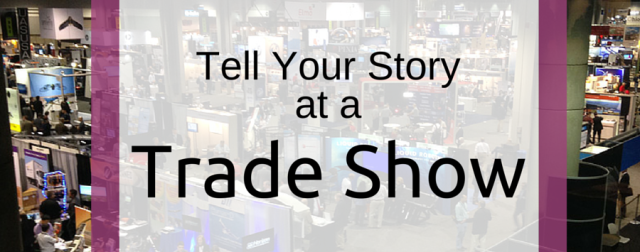
Planning for an exhibition requires knowledge of what to do beforehand, during the exhibition and what you should do afterwards. It is not enough in today’s competitive markets to have a simple exhibition, expecting people to flock to your exhibition space just because you are there.
Knowing how to have a successful exhibition includes having the proper tools and materials to draw people to your stand. Your responsibility is to bring in visitors and prospects and make them want to hear what you have to say, or to learn more about your products or services.
Here is some advice on how you should plan and prepare for your next exhibition, and why just turning up is not enough to guarantee a success and return on your investment.
The importance of proper planning and preparation beforehand
It is important to understand that proper planning and preparation are crucial aspects of any exhibition. Even more important, perhaps, is understanding that there is a difference between planning and preparing. The preparation stage requires that you determine key issues of your intended audience and how well you successfully predict their response or behaviours while at your stand.
Planning requires that you understand your objectives, who your targets are and your intended outcome.
But, feeling confident that you worked out all the details of preparation and planning is not enough to ensure a successful exhibition. You cannot sell, negotiate, build relationships or successfully communicate your ideas or proposals to an exhibition audience if no one is there to see you.
You must maximise your presence at every exhibition event. One sure way of doing that is to have an exhibition stand that sets you apart from your competitors, brings your message to life and attracts everyone’s attention.
What to do during an exhibition
To put it simply, it’s essential that you have an effective exhibition stand if you want to draw people into your space. Maximise your exhibition presence with a custom built exhibition stand that draws visitors over to your business, makes people interested in hearing what you have to say, and fundamentally makes them interested in hearing more about your products or services.
When you invest in a custom-built exhibition stand, with help from an agency with experience and expertise, you set yourself apart from competitors, tell visitors who you are and what you have to offer them. Customised exhibition stands help convey your message and quickly turn the attention of visitors to your stand.
While having a custom-built exhibition stand is an outstanding component of bringing in traffic during each exhibition, that on its own is not enough. Consider showing a short video or having an interactive activity inside your exhibition stand, or perhaps have other visual hooks. Be prepared to confidently answer questions while making personal appearances in your exhibition space.
What to do after an exhibition
Some exhibition participants dread the end of an exhibition because of having to tear down their exhibition space. However, when you invest in a custom built exhibition stand, clever innovation allows for easy setup, takedown and transport.
After the exhibition is finished, it is time to get to work following up on all your leads and prospects that visited your exhibition. Close deals and make sales by getting in touch with people while your exhibition is still fresh in their mind. If you wait to follow up until two months later, they may have lost interest and forgotten who you are, meaning you potentially risk losing the return on investment that you envisioned.
Remember to follow up with personalised messages and calls to everyone that visited your exhibition stand. The personal touch potentially goes a long way towards gaining and retaining new customers or clients for your business.




